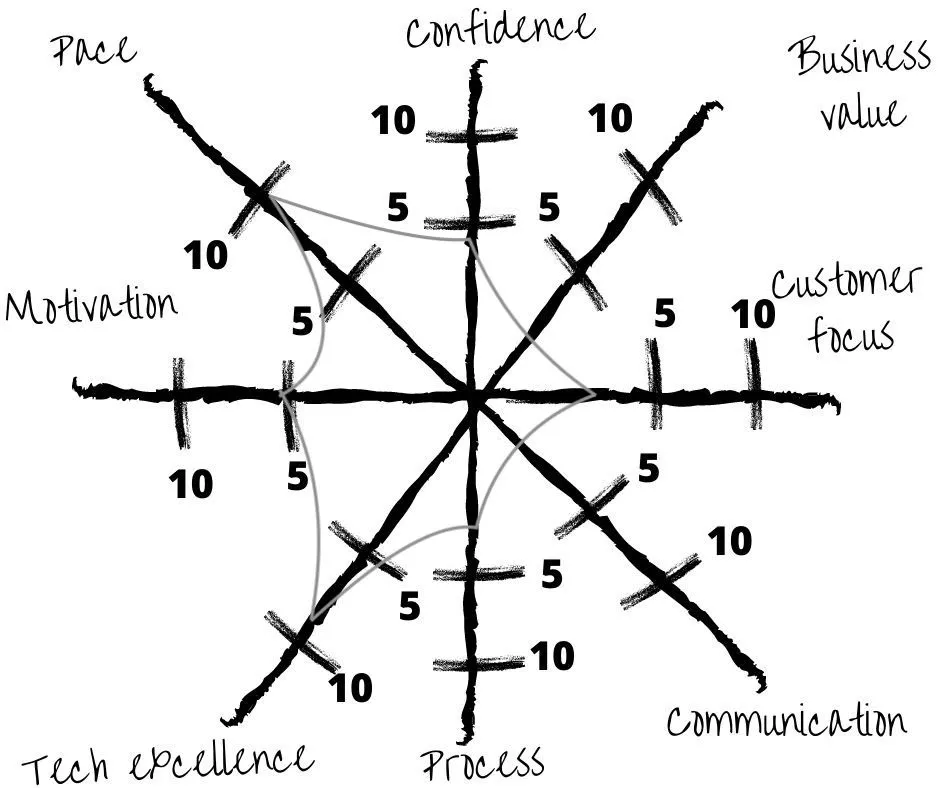
Agile teams are always curious to find new creative ways to boost the improvement in their processes. It’s the difficult task of the Scrum Master or Agile Coach to keep up with diverse engaging exercises to help them achieve that. One of the less popular but very effective retrospective templates for leading teams in the right direction during the retrospective is the Spider Web Retro.
This exercise will help you understand what abilities are important to you as an individual contributor, how your team rates against them, and what improvements you would like to make over the course of the next sprint as investments in your growth.
Make use of the spider web retrospective meeting format with your team!
This retrospective template bears its name because the final outcome of the meeting is a drawing that resembles a spider web.
It’s the team radar for improvement that indicates problems exactly like vibrations in the spider’s web notify the spider that there is something caught in it.
On top of that, the template itself looks like an eight-legged spider. It’s up to you to choose the association you like better and share it with the team!
Start the Spider Web Retrospective by drawing 4 lines that cross in the center, dividing your board into 8 equal parts (like cutting a cake into pieces), which become the axes of your graph.
The next step is for you to assign the appropriate labels to each end of the line. Think of the areas that are most important for your team.
Popular examples include:
Add a scale to each of the axes. Starting from the center, assign markings on each spider leg with the corresponding points, e.g. 3, 5, 7, 10, if you want to be more precise, 1 to 5, or just 5 and 10 (like in the example graph below).
Consider each of the eight topics by asking team members leading questions, like:
“How satisfied is the team with its [meeting culture, for example] on a scale of 1-10 (where 10 would be very satisfied)?”
After a brief discussion, the team votes based on the scale that has been applied. The average of all votes is marked on the board for each of the topics.
Once you’ve covered all topics, connect the dots and come up with action items that have the potential to improve the areas with the lowest score.

The Spider Web retrospective is a very fun and engaging activity that will definitely spice up a monotonous meeting agenda.
The best thing about it is that the results will always surprise you and uncover unexpected strengths and weaknesses!
It’s also the perfect template for remote teams, even if you don’t use a virtual board, because it doesn’t require writing on sticky notes. Instead, it’s a retrospective format based on discussion.
The spider web structure can be drafted beforehand by the Scrum Master on a shared screen and the result will be as good as it would be in a physical meeting. This exercise will help your team rate their abilities in the categories that are important to them, display the different ratings, and then discuss the areas of improvement.
Don’t miss out on this unique retrospective template — try it after your next sprint!